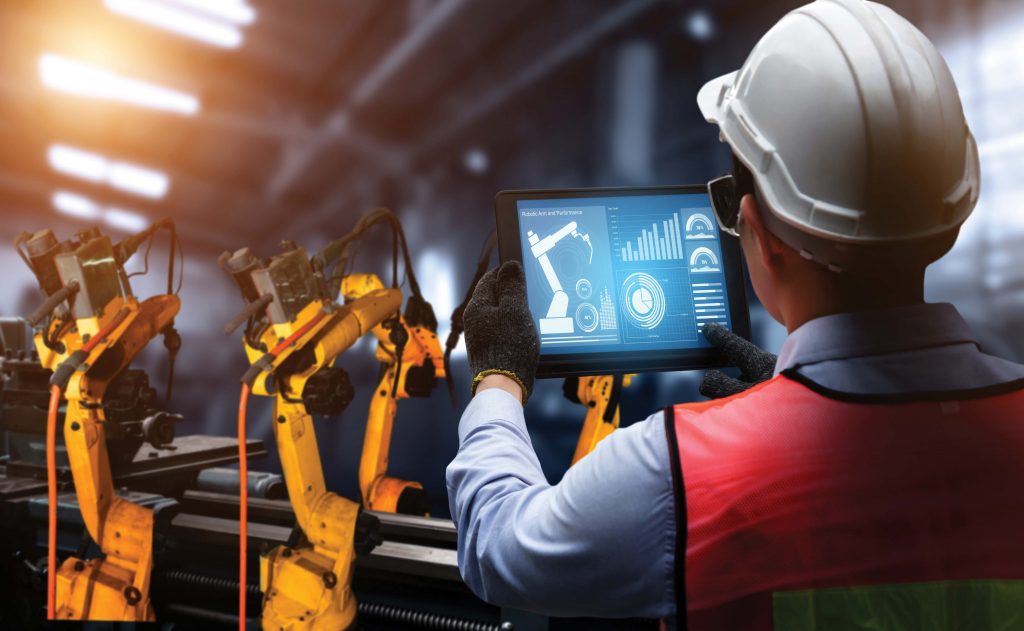
Adapting to Maintenance Technology
This year it seems like we are on the front steps of maintenance technology. Manufactures are talking about new advanced maintenance tools, and many are moving toward implementing technological applications to be used by plant engineers and tradespeople.
January 6, 2021 | By Peter Philips
 Photo: Getty Images / NanoStockk
Photo: Getty Images / NanoStockk 
Photo: Getty Images / NanoStockk
With technological developments such as additive layer manufacturing (ALM), Industry 4.0 and IoT, there is a paradigm shift in our ability to better repair or replace individual components, better understand the health of equipment, and plan maintenance based on the availability of significantly large volume of data provided through technology.
Let’s look at a few of the maintenance applications available to help analyze equipment health. Also, how this paradigm shift affects the culture within the maintenance department.
New tools and applications
Over the past several months I’ve implemented maintenance tablets with CertainTeed Gypsum.
First, we needed a device that can house all applications, and provide a connection for external testing devices. Android Tablets that allow the maintenance staff to remotely connect to the new applications, were chosen. Armed with Wi-Fi connectivity, the tablets communicate directly with the software applications, and store data on the company’s network.
Initially, the push was to get the work order system mobile. While working through the implementation, maintenance managers began to ask what other apps could be added to the tablet that would give the techs more tools to help maintain the equipment. The plants created a list of apps they
would like, and explained how they would benefit the maintenance department.
Mobile applications that were asked for
FLIR ONE – a lightweight accessory that transforms the Android device into a powerful thermal infrared camera. FLIR ONE displays live thermal infrared imagery using the FLIR ONE app, so you can see the world from a thermal perspective.
Proaxion and SKF Condition Based Monitoring – applications that use sensors to monitor equipment health in real time. With 24 and 7 remote monitoring, maintenance staff receive emails and SMS text alerts in advance of equipment failure. This apps also provide graphical data to provide measurement trends over time.
Yammer – helps with communication between shifts and facilitate communication with supervisors and troubleshooters. The Yammer mobile app allows maintenance personnel stay connected from anywhere. Yammer provides a connection with leaders and peers to share, and discover knowledge and engage in remote troubleshooting.
The Gates Design Flex Pro – a belt design and tensioning application. Maintenance people work with many belt drives and need belt tensioning calculations and specifications.
Gensuite – a safety application. Gensuite provides a quick review and update of critical information like assigning corrective actions and inspections, regulatory citations, safety data sheets (SDS), LOTO procedures, and more.
Fast Fields – allows build your own custom mobile forms using their form’s builder. The app will automatically distribute data and reports (PDF, Excel, Word, Json, XML, CSV,) according to your business workflow.

Photo: Getty Images / Metamorworks
Data can also be streamed from other sources, such as a machine’s programmable logic controller (PLC), MES, CMMS, or ERP system. Other apps can access equipment historians and machine learning software.
These are only a few applications we have been looking at, there will be more to come as we progress through the mobile device implementation.
The answer to the question of whether this technology will improve reliability, maintenance productivity, and a safer workplace, is yes. Plants with the condition based monitoring remote applications have seen a quick return on investment. Technicians receive alerting of impending failures, and take appropriate actions to avoid downtime.
One thing to keep in my mind is that technology will not replace fundamental maintenance practices. With available technology there will still be a need for basic equipment maintenance. Regular visual inspections and lubrication will need to be done by the professional maintenance staff, maintenance that cannot be measured with technology.
As these tools move further into the mainstream, they may no longer require advanced knowledge to use, putting them within reach of many organizations that may not have had the expertise or resources to leverage them in the past.
Remember, using advanced technology is a cultural shift. For years, we have been dependent upon maintenance staff to perform routine inspection and part replacements using their years of training and experience.
Any program that affects the way people have done their jobs the same way for years needs to have a cultural change management plan. When new devices, applications and tools are introduced into the maintenance culture, time must be taken to explain the reason for the technology, to include the maintenance staff in decision making in the implementation and training of new technology. Where maintenance managers are looking at the big picture of improved reliability and reduced cost, the equipment maintainers need to know how can this help me and what is in it for me.
Older staff especially need to be coached and encouraged to use the new devices, apps, and tools. Some of the best troubleshooters are getting older, and may not understand the latest technology. Both young and old need special attention to help them adapt to the new world of maintenance
technology. MRO
_________
Peter Phillips is the owner of Trailwalk Holdings Ltd., a Nova Scotia-based maintenance consulting and training company. Peter has over 40 years of industrial maintenance experience. He travels throughout North America working with maintenance departments and speaking at conferences. Reach him at 902-798-3601 or peter@trailwalk.ca.
